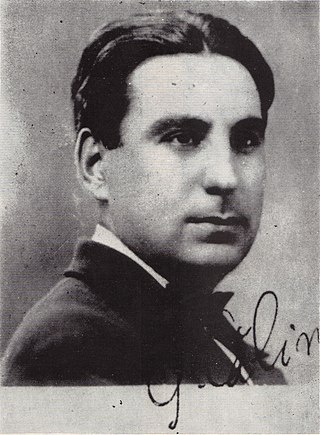
George Călinescu was a Romanian literary critic, historian, novelist, academician and journalist, and a writer of classicist and humanist tendencies. He is currently considered one of the most important Romanian literary critics of all time, alongside Titu Maiorescu and Eugen Lovinescu, and is one of the outstanding figures of Romanian literature in the 20th century.
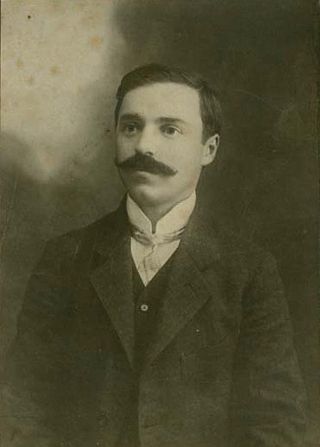
Panait Cerna was a Romanian poet, philosopher, literary critic and translator. A native speaker of Bulgarian, Cerna nonetheless wrote in Romanian, and developed a traditionalist style which was connected with classicism and neoclassicism. Praised by the conservative literary society Junimea, he was promoted by its leader Titu Maiorescu, as well as by Maiorescu's disciples Mihail Dragomirescu and Simion Mehedinţi. Cerna became the group's main representative during its decline, contributing to both major Junimist magazines, Convorbiri Literare and Convorbiri Critice. He also contributed pieces to the traditionalist magazine Sămănătorul, and was briefly affiliated with other literary journals.
I. Dragoslav or Ion Dragoslav, pen names of Ion V. Ivaciuc or Ion Sumanariu Ivanciuc, was a Romanian writer. His presence on the local literary scene meant successive affiliations with various competing venues: having debuted with the traditionalist and nationalist magazine Sămănătorul, he later connected the eclectically conservative Convorbiri Critice group of Mihail Dragomirescu with the Romanian Symbolist movement leaders Alexandru Macedonski and Ion Minulescu, before moving close to the modernist trend of Eugen Lovinescu and his Sburătorul.

Eugen D. Relgis was a Romanian writer, pacifist philosopher and anarchist militant, known as a theorist of humanitarianism. His internationalist dogma, with distinct echoes from Judaism and Jewish ethics, was first shaped during World War I, when Relgis was a conscientious objector. Infused with anarcho-pacifism and socialism, it provided Relgis with an international profile, and earned him the support of pacifists such as Romain Rolland, Stefan Zweig and Albert Einstein. Another, more controversial, aspect of Relgis' philosophy was his support for eugenics, which centered on the compulsory sterilization of "degenerates". The latter proposal was voiced by several of Relgis' essays and sociological tracts.
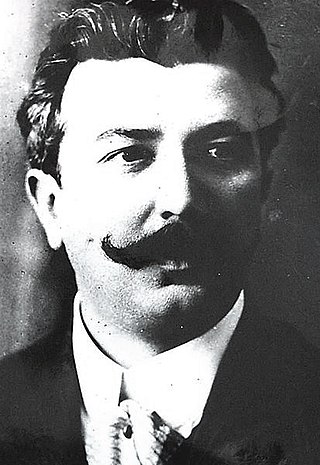
George or Gheorghe Ranetti, born George Ranete, was a Romanian poet, journalist and playwright, known as the founder and editor of Furnica magazine. A professional journalist from the late 1890s, he alternated between political dailies and literary reviews, being sympathetic to Romanian nationalism and traditionalism, and working under Ion Luca Caragiale at Moftul Român. By 1904–1906, he was active on the margin of left-wing traditionalism, or Poporanism, showing himself sympathetic to republican or generically anti-elitist ideologies. Such views and influences seeped into his activity at Furnica, which was for decades a prominent institution in Romanian humor.

Al. T. Stamatiad was a Romanian Symbolist poet, short story writer, and dramatist. A late arrival on the local Symbolist scene, he was primarily active as a literary promoter and, in 1918, editor of Literatorul review. Discovered and praised by Alexandru Macedonski and Ion Minulescu, he combined his presence in radical Symbolist circles with stints on more culturally conservative ones, crossing between the extremes of Romanian literature. By 1911, he had established himself in cultural and social circles as an exotic and vocal, sometimes violent, cultural debater.
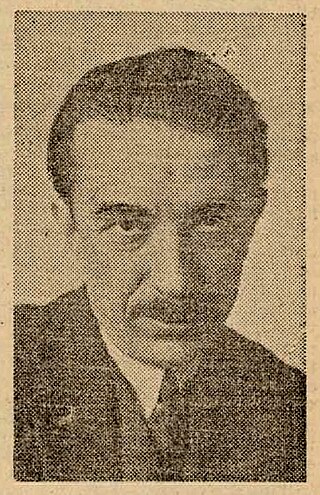
Dem. Theodorescu was a Romanian journalist, humorist, and critic, remembered for his social-themed novels but also for his controversial political stances. A committed opponent of the National Liberal Party establishment, Theodorescu frequented the avant-garde and socialist circles. During World War I, he transformed himself into a supporter of the Central Powers, and lived the occupation of Romania as a collaborationist. Like his friend Tudor Arghezi, he was imprisoned on a verdict of treason, but pardoned in December 1920.
I. M. Rașcu was a Romanian poet of Symbolist verse, cultural promoter, comparatist, and schoolteacher. He is remembered for his participation in the Romanian Symbolist movement: a founder and co-editor, with Alfred Hefter-Hidalgo, of Versuri și Proză magazine, he became one of the leading Symbolist figures in his native city of Iași before 1914. In later years, he lived more discreetly as a scholar and educationist, earning both praise and opprobrium for his sternness and erudition.
Mihail Cruceanu was a Romanian poet.
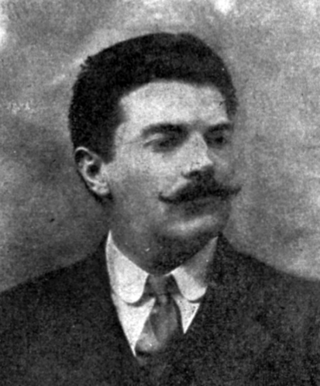
Donar Munteanu was a Romanian poet, representing the provincial wing of Romanian Symbolism, Convorbiri Critice circle and, later, the Gândirea literary movement. Generally considered a good, but not great, author, from his thirties and into old age he belonged to the devotional school of Orthodox Church writers, producing mostly sonnets. Professionally, he was active as a magistrate and prison inspector, a career which allowed him to visit the country and to participate in the literary life of Bessarabia. He withdrew from public life following the establishment of Romanian communist regime, and remained largely forgotten.
Eugeniu Ștefănescu-Est was a Romanian poet, prose writer and visual artist, professionally active as a lawyer. He belonged to the local Symbolist movement from ca. 1900, when he also became an associate and disciple of Ion Minulescu. Before Worled War I, while he took up jobs as a magistrate, his synaesthesic and extrovert lyrical pieces earned attention, while his cartoons were taken up in magazines such as L'Assiette au Beurre and Furnica. He abandoned the verse genre by the 1920s, earning attention as the author of fairy tales, and then also trying his hand as a novelist. Eventually losing his eyesight, Ștefănescu-Est spent the last thirty years of his life in anonymity, looked after by his daughter.

Paul Zarifopol was a Romanian literary and social critic, essayist, and literary historian. The scion of an aristocratic family, formally trained in both philology and the sociology of literature, he emerged in the 1910s as a rebel, highly distinctive, voice among the Romanian press and book reviewers. He was a confidant and publisher of the Romanian writer Ion Luca Caragiale, building his theories on Caragiale's already trenchant appraisals of Romanian society and culture. Zarifopol defended art for art's sake even against the Marxism of his father-in-law, Constantin Dobrogeanu-Gherea, and the Poporanism of his friend, Garabet Ibrăileanu. He was also a noted censurer of neoclassical trends, of philistinism, and of inauthentic customs, advocating renewal, but not revolution. A skeptic reviewer of modernist literature, he reemerged during the interwar period as its dedicated promoter, but his preference for literary entertainment over substance and many of his literary bets were shortly dismissed by other experts of the day.

Caton Theodorian, or Teodorian, was a Romanian playwright, poet, short story writer and novelist. A maternal nephew of the politician Eugeniu Carada, he was, through his Oltenian father, a scion of the boyar nobility. His noble origins informed his chief works in both naturalistic fiction and drama, which mainly deal with social decline and boyar obsessions with heredity. Although showcased by the National Theater Bucharest, Theodorian's plays were dismissed by critics as vulgar or wordy, and were sometimes rejected by the public. His most treasured contribution was a 1915 comedy, Bujoreștii, which synthesizes his recurrent themes. A moderate in ideological terms, the writer never openly affiliated with either the Romanian Symbolists or their Sămănătorul rivals, but frequented and was published by both. During the final twenty years of his life, he was attached to the Sburătorul circle.
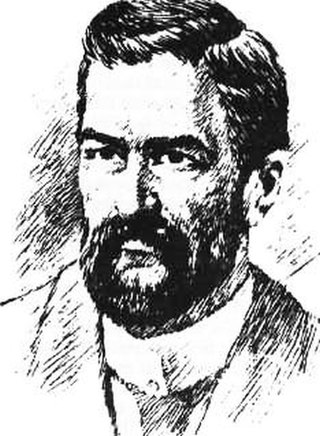
Ion Păun-Pincio was a Romanian poet.

Mihail Celarianu or Celerianu was a Romanian poet and novelist. Though he wrote his first poems at the age of twelve, and had them published at thirteen, he was initially trained as a musician at the Bucharest Conservatory. He then contemplated a medical career, and studied for a degree in Paris, but returned hurriedly to still-neutral Romania upon the start of World War I; his early literary contribution include some rousing up support for the Entente Powers. The Ententist campaign was successful, and Romania declared war in 1916. Celarianu volunteered to serve in the Romanian Army, seeing action with the infantry at at Predeal Pass, before being accepted into an auxiliary position by the Air Corps. His experiences influenced his autobiographical novels, as well as a play.

Haralamb George Lecca, also known as Haralamb Leca, Har. Lecca, or Haralambie Lecca, was a Romanian poet, playwright and translator. He belonged to an upper-class family, being the grandson of artist Constantin Lecca and brother of genealogist Octav-George Lecca, as well as nephew and rival of writer Ion Luca Caragiale. He had an unsettled youth, studying medicine and law for a while, and also reaching a Sub-Officer's rank in the terrestrial army. He debuted in literature under the guidance of Bogdan Petriceicu Hasdeu, who also employed Lecca's services as a medium. His early work was in poetry, often outstandingly macabre, evidencing his familiarity with 19th-century French literature and hinting at a vague affiliation with Symbolism. Briefly a collaborator of Junimea society, then of its dissident wings, Lecca never joined the fledgling Symbolist movement, and spent his later life in relative isolation from all literary circles.

Ludovic Dauș was a Romanian novelist, playwright, poet and translator, also known for his contributions as a politician and theatrical manager. He was born into a cosmopolitan family, with a Czech father and a boyaress mother, but his formative years were marked by life in the small boroughs of Western Moldavia. Trained as a lawyer and employed for a while as a publisher, Dauș joined the body of experts at the Ministry of Royal Domains, climbing through the bureaucratic ranks. In parallel, he advanced his literary career: a noted dramatist, he was an unremarked poet and historical novelist prior to World War I. His translation work covered several languages, and includes Romanian versions of The Kreutzer Sonata, Madame Bovary, and Eugénie Grandet.

Mircea Constantin Demetriade was a Romanian poet, playwright and actor, one of the earliest animators of the local Symbolist movement. Born in Oltenia to a theatrical family, he largely gave up on a similar career to become a bohemian writer. He associated with, and was inspired by, Alexandru Macedonski, building on early romantic influences at Literatorul magazine. Later, he incorporated borrowings from Charles Baudelaire and Arthur Rimbaud, two of the authors Demetriade would translate into Romanian.

Radu D. Rosetti or Rossetti was a Romanian poet, playwright, and short story writer, also distinguished as an attorney and activist. The son of playwright-aristocrat Dimitrie Rosetti-Max and nephew of Titu Maiorescu, he had a troubled and rebellious youth, split between Romania and Austria-Hungary; during these debut years, he kept company with senior literary figures such as Ion Luca Caragiale and Alexandru Vlahuță. Graduating from the University of Bucharest at age 26, he was already a successful poet of neoromantic sensibilities, a published translator of plays and novels, and also famous for his unhappy marriage to the literary critic Elena Bacaloglu. Rosetti then switched to writing social-themed plays and stories of his professional life, earning a high profile as a defender of left-wing causes and impoverished clients. He traveled extensively and to exotic locations, publishing a number of volumes detailing his experiences.

Barbu Nemțeanu was a Romanian poet, humorist and translator, active on the modernist wing of the Romanian Symbolist movement. Of Jewish Romanian background, he lived much of his life in the port city of Galați, which provided him with poetic inspiration, but whose provincial life sparked in him intellectual revolt. Orphaned and leaving school at an early age, then diagnosed with tuberculosis, he found meager employment as a clerk, but, throughout, maintained confidence in his poetic genius. Nemțeanu's Symbolism blended with socialism, but also with a lasting admiration for his adoptive Romanian culture, allowing him to publish pseudonymous work in traditionalist-antisemitic reviews such as Neamul Românesc. He was also one of the Symbolists who frequented the Convorbiri Critice circle, becoming personal friends with its leader, Mihail Dragomirescu.















